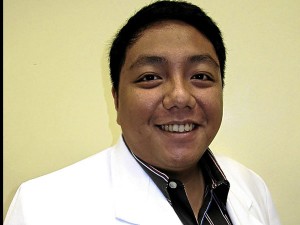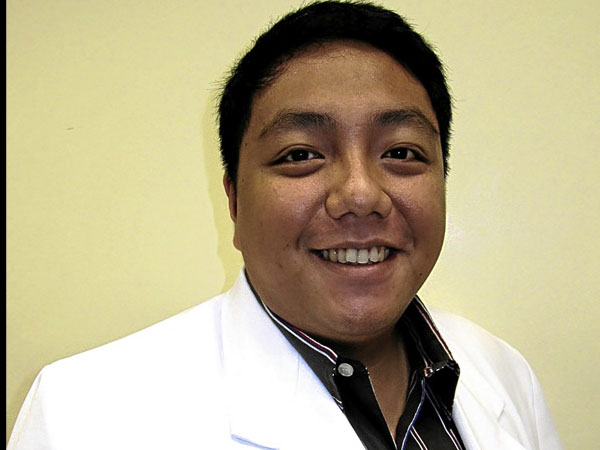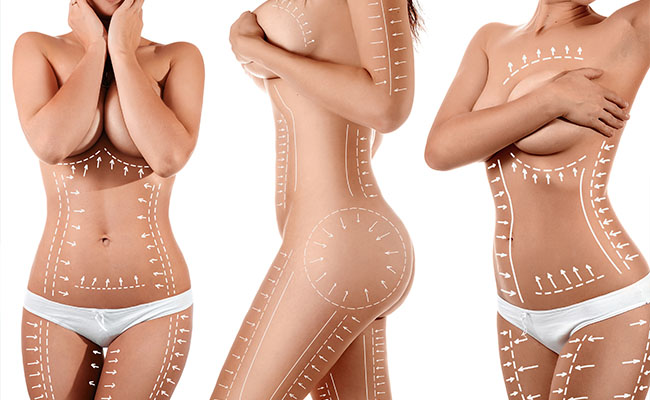
There are, according to 2007 figures from the National Statistics Office, 3.6 million elderly folk in the Philippines aged 65 and above, majority or 56.8 percent of them women.
According to Dr. Marc Evans Abat, the elderly are vulnerable to such illnesses as hypertension, heart disease, stroke, chronic obstructive lung disease, cancer, kidney failure, liver disease, cataracts, hearing impairment, arthritis and osteoporosis. Infections are fairly common in the older persons.
There is also the so called “geriatric syndromes,” Abat added. “Falling, for example, may be commonly thought of as resulting from just plain muscle weakness or arthritis when in fact it can be a manifestation of several maladies like urinary tract infection, dementia, drug adverse reactions, visual impairment, and pneumonia.”
In an interview with SIM, the internist-geriatrician shared important facts about Alzheimer’s:
Here are the signs to watch out for:
* In the initial stages, the symptoms can be very subtle like misplacing objects and having difficulty finding them. The memory impairment at this point is recognized by the patient and it may lead to some personality changes like easy irritability since the patient is becoming frustrated with what is happening.
* The loss of memory can progress to more serious problems like leaving the door open or the stove burning, becoming lost in places the patient is familiar with, and difficulty recognizing familiar people.
* In more severe cases, behavioral problems arise like becoming paranoid (e.g. accusing people of stealing money or marital infidelity), becoming uninhibited (e.g. running around naked or getting into unprovoked fights), or having hallucinations.
* In severe stages, elderly folk may lose their entire persona, becoming incontinent and unable to perform even simple activities of self-care like eating and swallowing. Even defecating becomes impaired. They may lose the ability to speak and communicate. Eventually, the patient succumbs to a variety of complications like infections.
Is there a test for Alzheimer’s disease?
There is no one sensitive test to screen for Alzheimer’s disease. A variety of tests both clinical and technical have to be used to pin down the diagnosis.
A complete medical history and physical examination is key to the diagnosis. The medical history should be thorough and able to demonstrate a chronology of changes and pertinent events. The physical examination should also be thorough and include neurological examination.
Memory tests can be done in an office setting to document deficits in intellectual functioning. Lab tests are done to rule out secondary causes of memory impairment (meaning intellectual impairment due to dysfunction in other organ systems). These include complete blood count, kidney, liver and thyroid function tests and urinalysis.
Vitamin B12 deficiency can also be tested. Imaging studies like CT scan or MRI of the brain can be used to rule out tumors or cranial bleeding. It can also help in determining structural changes that contribute to dementia like changes in the blood vessels of the brain or the presence of “destroyed” areas in the brain. There are other tests that can only be done in a research testing lab like “brain biopsy” or cerebrospinal fluid analysis.
Is treatment possible? What medicines can help?
There are no medications that can cure Alzheimer’s disease. The key here is to “slow down” the deterioration. Treatment addresses three important aspects: cognition, behavior and functionality.
The drugs can come in tablet form; they can also come in a patch form (useful for those who cannot take the oral form). All of these drugs have side effects and can provoke different reactions among patients, even with the same dose. What is needed is to find the proper balance of side effects and benefits for the patient.
The management of behavior is more difficult and challenging. Medications like mood stabilizers, antidepressants, sedatives and antipsychotics are used very sparingly and only in a selected set of patients whose behavior may endanger their safety or that of their family, or is excessively disruptive. Such behavior includes severe aggression and disturbing hallucinations.
Not necessarily disruptive but may lead to patient endangerment is sleep disturbance. The drugs have considerable adverse effects like falling, excessive sedation or even cardiovascular reactions.
Non-pharmacologic management has some benefit in reducing the frequency and duration of abnormal behavior and up to some extent, slowing down cognitive deterioration. These include physical exercise, music therapy, cognitive therapy, multi-sensory modalities, massage, aromatherapy, use of props and visual aids to prevent wandering and unwanted movements, reducing/eliminating restraint use, bright light therapy for insomnia and pets.
Physical therapy will help facilitate the proper exercises to maintain muscle strength, flexibility and cardiovascular conditioning. Occupational therapy can help guide patients in the proper execution of daily activities. Speech and swallowing therapy will also help in prolonging these abilities.
Why are dementia patients always hungry? Does dementia affect the appetite?
Some patients are unable to tell when they are full. They also have such severe memory impairment that they do not recall if they have already eaten. In some situations, these are also related to previous experiences of not having food to eat when they were younger. Hence, the imprinted remote memory of needing to eat a lot of food when it is available. But overfeeding can lead to vomiting since the stomach has a limited storage capacity, especially in older persons. A simple solution is to give the patient frequent but very small feedings and to provide distractions in between.
Does any kind of diet help? What about vitamins and supplements?
A balanced diet consisting of high value proteins, carbohydrates and fats sufficient in amount based on the energy requirements of the patient is all that is needed for most dementia patients. Most dementia patients in the earlier stages do not have any swallowing difficulty and are able to eat regular food. Of course the presence of eating and swallowing problems necessitate some modification in the components of the meal. The rice can be cooked to gruel-like consistency, the meat tenderized and fruits and vegetables finely minced or mashed.
Supplemental feeding using elderly-optimized formulas is helpful if feeding using regular modified food is inadequate. In certain situations (especially if the family is not keen or does not want to go into the trouble of processing fresh ingredients for tube feeding, for example), formula feeding can be the sole source of nutrition but this can be very expensive.
Use of vitamins may be indicated at low to moderate doses to ensure adequate daily allowances of macro and micronutrients. Excessive doses of vitamins should be avoided as these have adverse effects as well. Other supplements may be optionally given with considerable caution at it does not only add on considerable expense but also introduces the possibility of unknown and unwanted effects.
What food is not allowed?
In general, it is the same for both young and the old. No excess fat, preserved food, no excess salt, and the like. Other dietary restrictions are dictated by the patient’s diseases. For example, if the patient is diabetic, simple sugars are avoided. Restrictions should however take into consideration the possibility of inducing malnutrition in the patient. So coordination with your nutritionist and physician is important.
How do you prevent bed sores?
The dictum with pressure ulcers or “bedsores” is for patients not to have them in the first place. Regularly shifting position in bed every one to two hours is important. Avoid having the patient sit in one position for more than 30 minutes. Meticulous body hygiene is also important as dirt, grime, fecal material, sweat and urine can contribute to macerate the skin, making the patient more prone to ulcers. Properly moving them in bed using a blanket underneath is important to prevent friction-related excoriations (especially since the elderly skin is thin and easily wounded).
Regular application of moisturizing lotions will help keep skin supple. Using cushions in areas of high pressure (e.g. hips, sacral and lower back, heels, elbows and ankles) is important to decrease pressure in these areas in conjunction with regular position shifting.
There are products in the market today that will help decrease pressure ulcer risk. A dynamic air mattress is available that alternately inflates and deflates “cells” of the bed, thereby alternating areas with pressure supporting the patient’s body.
If pressure ulcers do occur, the vital thing to do is to relieve the pressure causing them by using the above methods. Further management depends on how deep the ulcers are. For superficial ulcers, cleaning with a gentle soap and water then applying a light commercial dressing specially made for this wound will help rapid healing. For deeper wounds and those with infection, debridement and antibiotics may be necessary. Other specialized dressings may also be used to promote healing in these settings. OHT
(Dr. Marc Evans M. Abat, MD, FPCP, FPCGM, is Consultant Director of the Center for Healthy Aging at The Medical City, Clinical Associate Professor at the Philippine General Hospital’s Section of Adult Medicine, and a Visiting Consultant at the Manila Doctors Hospital and the St. Luke’s Medical Center. He may be contacted at marc_evans_abat@ yahoo.com)













































